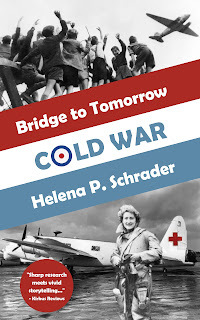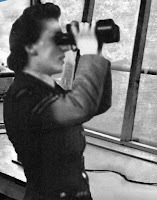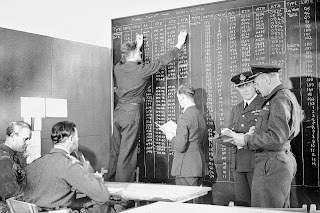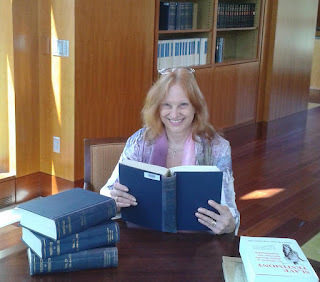Helena P. Schrader's Blog, page 6
August 6, 2024
The Characters of "Cold War" -- Flight Lieutenant Kit Moran
Like USAF Captain J.B. Baronowsky, Kit flew bombers during the war. Unlike J.B., he was severely injured and peace finds him with one foot less than he started the war. Kit Moran contributes to the themes of coping with disabilities and the scars of war, and it is largely because of them that he actively seeks participation on the Airlift.
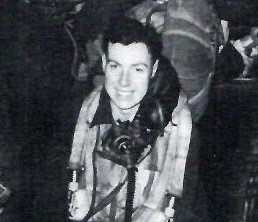
Readers of "Lack of Moral Fibre" and/or "Moral Fibre" will be familiar with Kit Moran. The son of a Colonial Official and a missionary's daughter, he grows up in Africa. He leaves home at 16 to take an apprenticeship in the UK. When the war breaks out, he volunteers for the RAF. Initially he is trained as serves as an engine mechanic or fitter. This leads him to volunteer as a flight engineer, and in this capacity he flies 36 operations against Germany. On the 36th op, his skipper is mortally wounded and three other crewmen severely injured. When ordered to fly the next day with a crew he doesn't know, Kit refuses and is promptly expelled from his squadron for "lacking moral fibre."
The story of what happens to him next is the subject of "Lack of Moral Fibre" and Kit's subsequent wartime career as a Lancaster skipper is the subject of "Moral Fibre."
At the start of the Bridge to Tomorrow series, Kit is studying aeronautical engineering at Leeds University -- and getting one rejection letter after another from prospective employers. When graduation comes, he still has no job, so he, his wife and their four-month-old daughter move in with Georgina's parents. Georgina's father is an Anglican priest who has a living in rural Yorkshire.
An excerpt featuring Kit Moran:
“The car’s making a strange squeaking noise inthe back,” the Reverend Edwin Reddings told his son-in-law as he came throughthe back door. He was scratching his head as if puzzled.
“The brakes?” Kit asked back.
“I don’t think so. The noise seemed to start whenI stopped braking.”
“I’d better take a look at it,” Kit declared,getting to his feet.
“I can take it to the garage if you prefer,”Reddings offered.
“No, it might be dangerous for you to drive,”Kit told him, grabbing overalls from a hook by the back door. “We’ve got timebefore dinner. I’ll see if I can find out what’s wrong.” He stepped into thelegs of the overalls and continued outside as he pulled the arms over his shirtand fastened the buttons. For the first half of the war, Kit had been a fitter,and he retained his old work clothes for tasks like this — or mucking out thestalls of the two horses his in-laws kept in a stable at the back.
Kitwelcomed the distraction because he could use something practical to do justnow.Kit had spent the afternoon filling out anelaborate and lengthy application form for a job with Ethiopian Airlines. Afterbeing turned down for scores of engineering jobs over the last six months, hiswife Georgina had talked him into responding to an advertisement from EthiopianAirlines soliciting applications from pilots, flight engineers and ground crew.It was as much Georgina’s enthusiasm as his own frustration that had inducedhim to respond. Georgina believed that she would find opportunities to teach inEthiopia. Kit, however, had discovered that the Ethiopians, with their 2,000-yearhistory, maintained an arcane bureaucracy. He had never encountered anything quitelike this application form before — not even in the RAF. It was 20 pages longand included lengthy questions about his family, his religion, his educationand, of course, his experience.
Kit took the tool kit out of the boot of hisfather-in-law’s car and put it down on the ground. Then he lay down on his backand squirmed his way under the tailgate with a torch which he directed towards thebrakes. As he conducted the inspection, he was asking himself how he wassupposed to answer the question “When was the last time you flew an aircraft?”
Did he admit to flying without a license withLeonard Cheshire in a Mossie that the Group Captain might — or might not — stillhave owned? Or did he omit that flight (which he had not dared record in hislogbook) and say that the last time he’d flown he’d crash-landed, breaking theaircraft into three pieces and leaving his flight engineer crippled for lifewhile crushing his left foot under the instrument panel so completely that theyhad to cut it off to extract him before the fuel tanks exploded?
Which brought him to the question of themedical exam. In addition to the application form, Ethiopian Airlines had senta five-page “Medical Questionnaire” to be completed “by the applicant’sattending physician.” Aside from the fact that he didn’t have a particularphysician, what were the Ethiopians likely to do with the item: “Missing leftfoot and half of lower left leg.” He knew he could fly with his artificiallimb, but why should Ethiopian Airlines believe him? And why would any doctorpass him fit to fly —
“Kit! Kit!” It was the urgent voice of hisfather-in-law.
The reverend’s tone was so alarmed, that Kitpushed himself back out from under the car fearing some sort of calamity. Had hisdaughter Donna had an accident? Or Georgina? Reddings was gesturing to him fromthe back door, signalling him to come. “It’s a telephone call for you!”
Kit pushed himself off the ground, using his flesh-and-bonesfoot, and wiped the dirt off his palms on the already dirty thighs of the overallsas he hastened to the house. “Who is it?” he asked his father-in-law, who stoodholding the door open for him.
“A Mr Goldman calling from London about a jobinterview!” Reddings exclaimed flustered. He knew how hard Kit had been lookingfor work these past six months.
Puzzled, Kit frowned slightly. He couldn’tremember the name Goldman, but there might well have been a Goldman among the scoresof personnel chiefs to whom he’d sent his many letters of inquiry. He took up thetelephone receiver and spoke into the handset, “Good afternoon. This isChristopher Moran.”
“David Goldman,” came the crisp answer. “I’mthe Managing Director of Air Ambulance International based in Berlin, Germany.His Majesty’s Government has decided to contract civilian airliners on theBerlin Airlift. My company is looking into options for adding air freight toour ongoing ambulance operations. If we go ahead, we will need to employ pilotswith four-engine ratings and experience. You were recommended to us by AssistantSection Officer Hart as a possible captain.” Kathleen! Kit thought, noting thatshe had been promoted. On the other end of the line, the unfamiliar voicecontinued. “I’m calling to see, first, if you would be interested in what, dueto the nature of the work, must be a temporary position only, and if so, if youcould come to an interview at the Savoy Hotel in London tomorrow or Friday.” Atlast, the clipped voice paused long enough to allow Kit to answer.
Kit’s pulse was racing. He was being offered achance to fly the Airlift! The day the British government had announced theirintention to supply the city by air, he had told his father-in-law that hewished he could be part of it. Reddings, ever the optimist, had told him hethought he would. Kit had not believed him. He’d been invalided out of the RAFand had seen no possible way to become part of this military operation. Now,out of the blue, things had changed. Civilians were being given a chance tofly. He could hardly breathe for fear he might say something to spoil hischances. He tried to keep his voice neutral as he replied: “The answer to bothquestions, sir, is yes. However, I’m currently in Yorkshire. I’m not sure abouttrain connections, so Friday afternoon would be better.”
“Excellent. The interview will be with ourDirector of Personnel, Mrs Emily Priestman, who will be able to provide youwith additional details. She says…” Goldman covered the phone with his hand andhis voice became muffled and unclear. Then his voice came clear and loud againas he announced, “Mrs Priestman would have time for you at 4 pm. In the tearoom.Is that all right?”
“Yes, sir. That’s fine. How will I recognise her?”
“Mrs Priestman will be wearing our black andred uniform. You should have no difficulty finding and identifying her. Pleasebring your logbook and licences to the interview.”
“Yes, of course.”
“Do you have any other questions?”
“No, I’ll save them up for the interview.”
“Excellent. Good evening, then.”
“Good evening.”
The telephone connection went dead, replacedby the dialling tone.
Dazed, Kit replaced the receiver and turned tofind his father-in-law anxiously watching from the back door and his wife peeringat him from the stairs. “Kit?” She asked.
“I’ve got a job interview in London on Fridayat 4 pm. I’ll have to—”
“Congratulations!” Georgina and her fatherexclaimed simultaneously, Georgina jumping off the stairs to run into his arms whileher father came forward to shake his hand.
“Ethiopian Airlines?” Georgina asked eagerly.
“No. It’s an outfit called ‘Air AmbulanceInternational’ based in Berlin and interested in flying cargo on the Airlift.” He admitted the latter with a sheepish grinin the direction of his father-in-law.
“Didn’t I tell you this would happen? It isyour destiny!” Reddings declared triumphantly, his whole face beaming withdelight.
Kit is a character in all three volumes of the Bridge to Tomorrow Trilogy
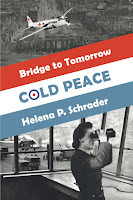
The first battle of the Cold War is about to begin....
Berlin 1948. In the ruins ofHitler’s capital, former RAF officers, a woman pilot, and the victim of Russianbrutality form an air ambulance company. But the West is on a collision coursewith Stalin’s aggression and Berlin is about to become a flashpoint. World WarThree is only a misstep away. Buy Now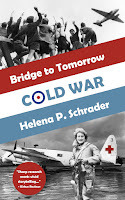
Berlin is under siege. More than twomillion civilians must be supplied by air -- or surrender to Stalin's oppression.
USAF Captain J.B. Baronowsky and RAF FlightLieutenant Kit Moran once risked their lives to drop high explosives on Berlin.They are about to deliver milk, flour and children’s shoes instead. Meanwhile,two women pilots are flying an air ambulance that carries malnourished andabandoned children to freedom in the West. Until General Winter deploys on theside of Russia. Buy now!
Based on historical events, award-winning and best-selling novelistHelena P. Schrader delivers an insightful, exciting and moving tale about howformer enemies became friends in the face of Russian aggression — and how closethe Berlin Airlift came to failing.
Winning a war with milk, coal and candy!
July 30, 2024
USAF Captain J.B. Baronowsky
The Berlin Airlift was a joint British/American effort in which the Americans carried the lion's share of the tonnage. Although Cold War is told largely from the perspective of Europeans (British, Germans and Ukrainians), an American story line was absolutely essential. Captain J.B. Baronowky, a veteran of the 8th Air Force, was the right man for the job.
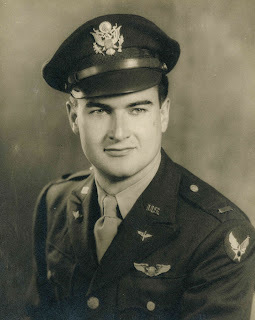 J.B. is the son of Polish immigrants, whose his father works in an auto factory near Detroit. The first in his family to go to college, J.B. leaves his studies shortly after the Japanese attack on Pearl Harbor to volunteer for the army air corps. He eventually earns his pilot's wings and in due time finds himself in at the controls of a B-17 "Flying Fortress" stationed in the UK. He flies a full tour of duty, bombing strategic targets in Germany during one on the most dangerous and deadly periods of the air war in Europe. J.B. returns to the U.S. after the war and takes advantage of the "G.I. Bill" to resume and complete his university education. He earns an aeronautical engineering degree from the University of Michigan, and gets engaged to the pretty and popular theater student, Patty O'Brien. His plans for a career designing and developing aircraft are rapidly vetoed by Patty, however, who doesn't like the 'low" salaries in research institutes and refuses to move away from Detroit. Instead, Patty's father gets J.B. a high-paying job at General Motors. J.B.'s future looks bright in the summer of 1948. Here is an excerpt featuring J.B.:
J.B. is the son of Polish immigrants, whose his father works in an auto factory near Detroit. The first in his family to go to college, J.B. leaves his studies shortly after the Japanese attack on Pearl Harbor to volunteer for the army air corps. He eventually earns his pilot's wings and in due time finds himself in at the controls of a B-17 "Flying Fortress" stationed in the UK. He flies a full tour of duty, bombing strategic targets in Germany during one on the most dangerous and deadly periods of the air war in Europe. J.B. returns to the U.S. after the war and takes advantage of the "G.I. Bill" to resume and complete his university education. He earns an aeronautical engineering degree from the University of Michigan, and gets engaged to the pretty and popular theater student, Patty O'Brien. His plans for a career designing and developing aircraft are rapidly vetoed by Patty, however, who doesn't like the 'low" salaries in research institutes and refuses to move away from Detroit. Instead, Patty's father gets J.B. a high-paying job at General Motors. J.B.'s future looks bright in the summer of 1948. Here is an excerpt featuring J.B.:
Both of J.B.’s sisters had beeninvited to a bridal shower hosted by Patty’s maid-of-honour in Ann Arbor. Theevent finished at four pm, and J.B. picked his sisters and Patty up to takethem to dinner at his mom’s. The plan was for him to drive Patty home afterwards.
By the way the girls werechatting and laughing, J.B. gathered that the event had been a success. Settlinginto the backseat, Barb asked, “Do you have many more showers, Patty?”
“Just two, one next week and onethe week after. Then it will be the Big Week itself.” Patty soundedjubilant.
“It feels just like the build-upto D-Day,” J.B. groused under his breath as he turned the key in the ignition.
Patty leaned forward to switchon the car radio. She turned the dial until she found music she liked and thentwisted around to talk to Barb over the back of the seat. They were talkingfashion and J.B. tuned them out. The music on the radio had given way to thenews. “…General Lucius D Clay arrived in Washington this morning forconsultations with President Truman and the Joint Chiefs of Staff. Meanwhile,in Berlin, the situation remains tense, with major pro-Communist demonstrationsin the Eastern Sector of the city. The American Commandant, Colonel Howley,warned—”
Patty turned the dial in searchof music again.
“I was listening to that,” J.B.snapped annoyed. The situation in Berlin interested him. He hoped the Alliesweren’t going to just back down. His father was outraged over the Sovietannexation of much of Poland and kept saying it was time to teach Stalin alesson.
“Oh, sorry, honey,” Pattyreplied, and deftly changed the subject by asking, “Don’t you want to stop andpick up some flowers for your mom?”
J.B. liked the thought, but hiswallet was getting awfully thin these days. “Naw, we don’t have time,” he toldPatty and kept driving. He supposed everything would be OK once he startedworking, but the wedding and all these pre-wedding events were financially andemotionally draining. J.B. was tired of smiling at everyone, giving a thousandpeople the same resume of his future job while listening to inane chatter andgirls giggling. He wanted to get on with his life.
Just after six, they pulled intothe drive of his parents’ home. J.B. knew Patty disliked the entireneighborhood because all the houses looked like trailers and sat on identicallittle plots of land. She’d be in a hurry to leave tonight — and probably therest of their lives, too. He sighed in anticipation of lifelong tension betweenPatty and his parents as he flung the car door open to get out.
His brother Stan burst out of thefront door and jumped off the porch without using the steps. “J.B.! You’ve gota telegram!”
“What?”
“A telegram! It was deliveredwhile you were in Ann Arbor!” Stan shoved it at him.
It was addressed to Captain J.B.Baronowsky, Jr. and J.B..’s heart started pounding. He ripped it open onlyvaguely aware of Stan, Patty and his mother watching him.
CAPT J B BARONOWSKY JR. TOREPORT ASAP BUT NOT NLT 0800 FRIDAY 23 JULY AT SELFRIDGE AFB FOR IMMEDIATE ANDINDEFINITE OVERSEAS DEPLOYMENT STOP ADJ GEN USAF.
“What the f—” he cut himself offjust before he offended his mom and Patty. “They can’t do this to me!” heprotested as he read the text again and again. Yet even as he protested, heknew they could and had done it to him.
“What is it, J.B.?” Patty asked.
“What does it say?” Stan echoed.
“Jesus Christ!” J.B. swore, andhis mother reproached him sharply.
“Mom! You don’t understand!These are orders to report to Selfridge AF Base by 8 am tomorrow morning.”
“For your reserve duty? Ithought you couldn’t be called up until—”
“They can call me up anytimethey please! And it’s not reserve duty — it’s an overseas deployment.”
Exclamations of disbelieferupted on all sides. Patty snatched the telegram out of his hand to read itfor herself. As soon as she'd absorbed the text, she started protestinghysterically. "This can't be! It's insane! That’s less than 24 hours away!And what do they mean by ‘overseas’ and ‘indefinite’? There has to besome mistake!" Patty's tone rose in key and volume with each sentence.“You have to call someone and get things straightened out!” she ordered her fiancée.“If you explain to them about our wedding —”
J.B. cut her off. “The Air Forcecouldn’t care less about my wedding or my job! If they want Capt. Baronowskyback in uniform and flying some gosh-darn airplane, then nothing else mattersto them.”
“But you can’t possiblygo!” Patty wailed.
“You want me to be in jail onour wedding day?” J.B. shot back at her, then turned away clenching andunclenching his fists.
“I’m gonna call my dad,” Pattydeclared. “I’m sure he’ll know some way to get you out of this.” She ran up thesteps and into the Baronowsky house, brushing past J.B.’s mother.
But Patty’s call didn’t changeanything. Her Dad said he’d “see what he could do” but nothing could be donebefore 8 am tomorrow. With Patty getting increasingly hysterical and ventingher anger on everyone else, Barb agreed to take her home in J.B.’s car, so J.B.would have time to pack. His dad insisted he was well enough to drive him toSelfridge AFB, although it meant getting up at 4 a.m. and leaving the housebefore dawn.
J.B.’s mom spent most of thenight ironing his uniform shirts and trousers and then got up at 3 to make abatch of chocolate chip cookies that she wrapped in aluminum foil. In theeerie artificial light of the kitchen, J.B. hugged her goodbye while his fatherbacked the car out of the garage. His mother was teary-eyed. “I don’t see howthey can just yank you out of the middle of your life and send you overseaswhen there’s not even a war on. It just doesn’t seem right,” she complained.
“That’s the army way, Mom,” J.B.told her with resignation. “Duty comes first. Things are pretty tense inEurope, and my guess is we’re deploying a couple of bomber squadrons to Englandto remind the Reds we can hit them if we want. I’ll send a cable as soon as Iknow for sure, but meanwhile, don’t worry too much. This is justsabre-rattling. No one is going to be shooting at me.”
J.B. is Introduced in the second Volume of the Bridge to Tomorrow Trilogy
Berlin is under siege. More than twomillion civilians must be supplied by air -- or surrender to Stalin's oppression.
USAF Captain J.B. Baronowsky and RAF FlightLieutenant Kit Moran once risked their lives to drop high explosives on Berlin.They are about to deliver milk, flour and children’s shoes instead. Meanwhile,two women pilots are flying an air ambulance that carries malnourished andabandoned children to freedom in the West. Until General Winter deploys on theside of Russia. Buy now!
Based on historical events, award-winning and best-selling novelistHelena P. Schrader delivers an insightful, exciting and moving tale about howformer enemies became friends in the face of Russian aggression — and how closethe Berlin Airlift came to failing.
Winning a war with milk, coal and candy!
July 23, 2024
The Characters of "Cold War" -- Assistant Section Officer Kathleen Hart, ATC
Cold War is characterized not only by a large cast of characters but by a variety of themes. Key among these is the often overlooked power of women -- even in a time when women were not prominent in positions of power. The post-war years were infamous as a period in which women who had been doing important work during the war years were sent home. They appeared to go meekly in part because many women really were glad to get away from the factories, the shift work, the dangers and the discipline of the services. But some women didn't have a choice: war widows with dependent children.
Kathleen Hart is one of these.
“Mrs Hart, please try to understand.” VirginiaCox argued patiently with the WAAF officer. “Everyone is talking about theseparachutes with sweets attached. There were scores and scores of witnesses, butno one has a photo of it. A picture is worth a thousand words. All I’m asking is that you lend me youradorable little daughter for a few hours. With her bright blond hair, she looksGerman. We can braid it the way the Germans do and dress her in the oldest,most faded clothes she has. I’ve already made a parachute with one of my oldscarves and have attached some Hersey’s chocolate that an American friend gaveme to it.” Virginia held up her contraption. “We can throw the parachute out ofan apartment building window and position Hope below, waiting with upliftedarms. It will be a sensational shot!”
“It would be fake,” Kathleen answered tartlyand indignantly. She did not like this idea at all.
“No more ‘fake’ than most of the films andphotos we made during the war,” Virginia countered. “You know as well as I do thatall those laughing ‘Fighter Boys’ lounging around waiting for a scramble wereposed for the photographers. And so were the images of Bomber Boys intentlywaiting to hear the ‘target for tonight.’ But they weren’t lies. They werestaged, yes, but they replicated reality as accurately as possible. Thatis what I propose to do now. What is so wrong with that?”
Kathleen didn’t have an answer. She lookedover at Hope, who at once started begging. “Please, Mummy! Please!” Kathleenhated being manipulated and all her instincts said this was wrong, but shelacked the arguments to plead her case.
Yes, she could slam the door in the reporter’sface, but that would probably land her in more trouble. The reporter worked forthe Times, and her father sat in Parliament. Perhaps more relevant, the WAAFOC was on very good terms with her and had brought her over, saying she was“sure” Assistant Section Leader Hart would have no objections. Kathleen andParsons had managed to avoid clashes largely by keeping out of each other’sway, but Parsons still had the power to make life very unpleasant for Kathleenif she wanted to. Kathleen preferred to find a compromise now.
She took a deep breath. “I’m sorry, but I’mnot going to let you just borrow Hope. If you want to take Hope anywhere, thenI am coming with you. It is my day off.”
“Oh, splendid!” Virginia agreed withexaggerated enthusiasm.
…
American Skymasters were swooping down at them,and the roar of their engines was deafening. Their wheels and flaps were downas they passed directly overhead, and one could see the oil stains on the wingsand the bolts holding the fuselage together.
“Oh, look!” Virginia exclaimed. “There’s agroup of German children over there. They must be hoping for a sweet drop!Let’s go and talk to them.” Flinging the car door open, she made a beeline for Germanboys and girls, Hope and Kathleen forgotten. Kathleen took a disgruntled Hopeby the hand and followed.
At the sight of three adults approaching froma car with Allied plates, the children grew still and solemn. They probablyfeared being chased away.
“Sprechen Sie Englisch?” Virginiaasked.
“A little,” one girl answered.
“Are you waiting for sweets to be dropped froman aeroplane?”
They all nodded energetically.
“From one of those?” Hope asked pointingupwards, and her mother hushed her.
Virginia asked the German girl, “Have youcaught any sweets before?”
All the children nodded vigorously, and one ofthe younger children said something with a giggle that the older girltranslated. “It is the first chewing gum any of us have ever had.”
“Gum’s bad for your teeth!” Hope informed them.Kathleen put her finger to her lips, harvesting a frown and a stamped foot asshe demanded, “Why can’t I say anything?”
“Because Miss Cox wants to hear what theGerman children have to say.”
“Were you here yesterday and the day before?” Virginiaasked the Germans.
They nodded solemnly.
“But no sweets were dropped?”
They shook their heads.
“But you still come every day?”
“It isn’t just the sweets. Every plane bringsfood or coal or other things we need,” the eldest girl explained. “We watchedthe planes before the sweets were dropped, too. As long as the planes come, mymother says, we won’t have to submit to the Ivans.”
Good answer, Kathleen thought, and she glancedup just in time to see a USAF Skymaster that was almost on top of them start torock back and forth. Pilots often did that to “wave” to girlfriends or parents,but the wild reaction of the children took her by surprise. They startedjumping up and down and waving with both hands; their high-pitched voices deliveredear-splitting, cacophonic yells of glee. Hope instinctively joined in withouteven knowing what it was all about.
The next thing Kathleen knew, tiny parachuteswere opening over their heads with chocolate bars and packages of gum hangingfrom them. The children’s shouts of joy reached a fever pitch, almost blottingout Virginia’s furious screams; her photographer had left his camera in thecar.
It was too late for a photo. The last of theparachutes with two Babe Ruths swaying from some strings was floating down towardsoutstretched little hands. Kathleen heldHope back just in time. Hope stamped her foot again and whined, “Why can’t Ihave some?”
“Because we have sweets rations. Thesechildren don’t,” Kathleen told her firmly. “I’ll give you some chocolate whenwe get back to Gatow.”
Returning her attention to the Germanchildren, Kathleen was astonished to see that rather than tearing open thewrappers and eating whatever they could capture, the children first pooledtheir treasures and then shared them out with scrupulous fairness. In the end,there were three chocolate bars too many. Earnest discussion followed in Germanbefore these were handed to three children, who stowed them away in a pocket,evidently for absent siblings. This gesture more than anything struck a chordin Kathleen. She turned to look at the tail of the receding Skymaster.
Did the young men in that aircraft have anyidea how happy they had just made these children? Could Americans who had neverknown shortages, rationing or hunger grasp what a chocolate bar meant tochildren like these?
They must. Otherwise, they wouldn’t go to somuch trouble to make little parachutes from their cotton handkerchiefs andattach candy to them. Again, she looked toward the Skymaster that had concludedits rollout and was turning off the runway. She squinted, trying to read thenumbers on the tail fin.
The USAF used tailfin numbers to identifythemselves to the tower. If she could read the number, then if it ever came toGatow she would recognise it and could try to talk to the pilots. She knew thecrews changed, but she’d at least have a chance of meeting the young men who’dgone to so much trouble to bring happiness to children they didn’t know.
But the Skymaster was too far away. She wouldnever have any way of knowing who had come up with this idea of dropping candy tothe children of Berlin. Yet, most likely he had once dropped bombs on them. Thethought moved her to unexpected tears. Ken had loved making Hope laugh andsmile. She was sure he would have loved to take part in something like this —if only he’d lived to be here. She felt him beside her, smiling.
Kathleen is a character in both of the First two volumes of the Bridge to Tomorrow Trilogy

The first battle of the Cold War is about to begin....
Berlin 1948. In the ruins ofHitler’s capital, former RAF officers, a woman pilot, and the victim of Russianbrutality form an air ambulance company. But the West is on a collision coursewith Stalin’s aggression and Berlin is about to become a flashpoint. World WarThree is only a misstep away. Buy Now
Berlin is under siege. More than twomillion civilians must be supplied by air -- or surrender to Stalin's oppression.
USAF Captain J.B. Baronowsky and RAF FlightLieutenant Kit Moran once risked their lives to drop high explosives on Berlin.They are about to deliver milk, flour and children’s shoes instead. Meanwhile,two women pilots are flying an air ambulance that carries malnourished andabandoned children to freedom in the West. Until General Winter deploys on theside of Russia. Buy now!
Based on historical events, award-winning and best-selling novelistHelena P. Schrader delivers an insightful, exciting and moving tale about howformer enemies became friends in the face of Russian aggression — and how closethe Berlin Airlift came to failing.
Winning a war with milk, coal and candy!
July 16, 2024
The Characters of "Cold War" -- Wing Commander "Robin" Priestman, Station Commander RAF Gatow
Because the Bridge to Tomorrow Series is designed to show the first confrontation of the Cold War from a variety of perspectives, there is no clear protagonist. Nevertheless. no character plays quite as central a role as Robin Priestman. As Station Commander of the RAF Gatow, he is at the very centre of the vortex. His position enables him to see the bigger picture, like an eagle hovering over the entire mess. However, he is not just an observer. He is also an important actor, contributing often subtly yet sometimes decisively in events.
Readers of mybest-selling Battle of Britain novel, "Where Eagles Never Flew" willbe familiar with Robin. That novel opens in May 1940 with Robin, then a flying officer, onhis way to France with the rest of his squadron. It ends roughlysix months later with Robin, an "ace", a squadron leader, and commandinga front-line Hurricane squadron from RAF Tangmere.
The Bridge toTomorrow series picks up Robin's story in late 1947. After serving onMalta in 1942 and leading a fighter wing in 1943, he has spent the last days of thewar in a German POW camp and the first years of peace in a staff position atthe Air Ministry. In Cold Peace, Robin is promoted to wing commander andappointed station commander at RAF Gatow, the small, sleepy, grass airfield inthe British Sector of Berlin. Although he arrives in Berlin hostile to theGermans, he soon recognizes that the real enemy is the Soviet Union.Overcoming bureaucratic inertia, he undertakes construction of a concreterunway at Gatow, and by the time a blockade starts he identifies strongly withthe city of Berlin.
Cold War opens with Robinconfronting the fact that HM government and the United States have committed themselvesto supplying more than two million German civilians by air -- although the infrastructure necessary to fulfill that commitment is woefully inadequate. As the commander of one of the two “receiving” airfields in Berlin he is particularly alarmed by the fact that his concrete runway isn’t finished yet and in blockaded Berlin neither construction equipment nor concrete is available. Another problem is that air traffic controlis an “accident waiting to happen.” In addition to those objective problems, he is confronted with bureaucratic petty mindedness on the part of his direct superior, and then there is the ever-present threat of Soviet sabotage….
Below an excerptfeaturing Wing Commander Priestman:
As he reached for his appointment diary, Sergeant Andrews,the WAAF clerk who ran his office, entered with his morning tea. “Everythingall right this morning, sir?” she asked cheerfully.
“So far,” Priestman answered, just as the ceiling light wentout. They both glanced up towards the light fixture in the centre of the room.
“Must be the bulb,” Andrews suggested, “I’ll callmaintenance.”
But Priestman noted that the sound of the vacuum had cut offat the same instant that the light went out, and he had a sinking feeling. Fromthe hallway came excited jabbering in German. His desk faced the window towardsthe runways, but the windows on the other side of his office looked out overthe rest of the station. Priestman stood and went to look out of these. Just ashe’d dreaded, agitated people were emerging from various buildings. A momentlater the generator for the control tower groaned into operation. “We’ve lostpower all across the station,” he told his secretary in a resigned tone.
“Do you think the construction crews working on the new runwaymight have cut the main line, sir?” Andrews suggested optimistically.
“We can hope,” he answered as he returned to his desk. Withoutbothering to sit down, he reached for the phone, half expecting it to be dead;he was relieved to hear a dialling tone. He rang through to the tower. “Howmany aircraft do you have on approach?”
“Two in Berlin airspace and six in the corridor. All eightaircraft of No. 30 Squadron coming in loaded with flour and other foodstuffs.”
“Get them down. I’ll try to stop the next squadron fromtaking off.”
“Do we know what happened, sir?”
“I can guess.” Priestman hung up. It was one of the bizarreanomalies of the absurd situation in which they found themselves that — althoughGatow received its electricity from the Soviet Sector — power had not been cuton 24 June when the lights went out across the rest of the Western Sectors.Since no one wanted to wake sleeping dogs, the issue had not been raised withthe Soviets. It appeared, however, that the Soviets had just discovered their mistakeand corrected it.
Priestman startedto work through the consequences. The radar generator for the tower might workfor another hour or two, but eventually it would run out of diesel. While theystill had limited reserves of diesel, without power the petrol bowsers wouldnot work, so they would have to refill the generator by hand, which would takea long time. Yet even if they could keep the tower operational, they still neededelectricity for the equipment in the maintenance hangars and to light the flarepath for landings after dark, not to mention lighting for taxiways, hangars,and heat to run the kitchens etc.
The StationAdjutant, Flying Officer “Stan” Stanley, was in the doorway. “Are you awarethat we’ve lost power across the airfield, sir?”
“Yes. Check withLieutenant Colonel Russel about whether his construction crews might havedamaged something. Meanwhile, I’ll find out if incoming flights can be divertedto Tempelhof.” As he spoke, he sat down behind his desk and took up thereceiver again, requesting a connection to Group Captain Bagshot, the RAFAirlift commander.
Priestman wasrelieved to be put through to the senior officer promptly, although Bagshotsounded irritated — as if he didn’t like having to deal with Gatow. “Sir, powerhas been cut to Gatow. We’re talking the airborne aircraft down usinggenerators, but our diesel reserves are limited and, of course, without electricity,almost nothing else works either. Would it be possible for you to diverttraffic to Tempelhof?”
Bagshot gruntedhis displeasure, but agreed, “I’ll see what they can handle, but it won’t beeverything. What the devil caused the power outage and how fast can you get itrepaired?” He made it sound as if he suspected Priestman of some sort of negligence.
“I’m checking onthat now, sir. There’s an outside chance that the runway construction crewdamaged a power cable but given that our power comes from the Soviet Zone, I’mafraid we must assume that the cut was intentional.”
“Did you just saywhat I think you said?” Bagshot sounded incredulous and his Scottish accentbecame particularly thick. “Your power comes from the Soviets?”
“That’s correct.”
“Why didn’t they cutit off before now, then?” Bagshot asked flabbergasted.
“You’ll have toask the SMAD that, sir.”
“Why didn’tanyone tell me about this?”
“I’m sure Imentioned it in your first briefing, sir, but since the Soviets hadn’t cut thepower, it appeared that they did not intend to do so.”
“In other words,you assumed everything would be all right,” Bagshot sneered. “WingCommander” (he stressed the lowly rank of the offender) “Priestman assumed— and was wrong! Don’t you understand that if Gatow has no power, we can callthis whole thing off? It’s impossible for us to supply everything Berlin needsby air if we have only one receiving airport! But because Wing CommanderPriestman assumed the Soviets would not cut off his power, we’ve startedthis massive operation and crowed about it to the whole world! We’ll certainlylook the fool now!”
This outburst,Priestman decided, did not require a response. He confined himself to asking ina clipped, professional voice. “Will you be able to stop incoming flights toGatow until further notice, sir?”
“Oh, I’ll stopthem all right! But if you don’t get this sorted out very soon, you can be sureyou won’t be commanding Gatow for very long — or any other station either! Ivery much doubt you’ll keep your commission after making His Majesty’s entiregovernment look like perfect idiots to the rest of the world!” With that, theGroup Captain hung up.
Priestman put thereceiver down and stared at it for a moment as if waiting for it to catch fire.Then, unable to sit, he stood and went to the window overlooking the runways. Hewatched dispassionately as the first of 30 Squadron’s Dakotas set downdecorously on his PSP runway and rolled to the far end, braking carefully. Asit turned off the runway, it was met by a Land Rover that led it to the apronin front of one of the hangars. Already the next Dakota was in sight, turningin for the final approach.
After severalseconds, Priestman realised he’d been left cold by Bagshot’s threats to hiscareer. The far more important issue was the Airlift itself. As Group Captain Bagshot had so bluntly pointedout, supplying Berlin entirely by air was challenging even with two fullyoperational receiving airfields. It would be utterly impossible to maintain theAirlift if Gatow were knocked out of the game.
Which was exactlywhat appeared to have just happened. The Ivans were on the brink of shutting downthe Airlift before it fully got off the ground. Embarrassingly, they had noteven needed to employ force, making a mockery of Clay’s promise that “nothingshort of war” could force the Western Allies out. Far from starting a war, all theIvans had needed to do was flip a switch. Now Gatow was useless, ‘kaput’ as theGermans said, and that meant the Airlift was over.
Yet, some part ofPriestman’s brain refused to accept that very simple fact. Some stubborn partof him insisted there had to be a way out of this fiasco. Maybe there was achance they could draw power from the one small, inadequate, and overworkedpower plant located in the West? Obviously, meeting Gatow’s electricity needs,would reduce the amount of power available for the factories, transport, facilitiesand households of the civilian population, but the alternative was surrender. Furthermore, he had to be sure that wastechnically possible before raising the possibility with the city government. Theman who could answer the technical question was Lt. Colonel Russel. Meanwhile, thearrival of the Sunderlands might distract attention while they looked for asolution. If he was lucky, it might be afternoon before anyone noticed that theairspace over Gatow was strangely silent.
A knock on thedoor interrupted his thoughts and he turned to call, “Yes? Come in!”
LieutenantColonel Russel, Corps of Royal Engineers, stuck only his head around the edgeof the door as if he were trying to make as small a target as possible before squeakingout in mock terror. “Don’t shoot! Don’t shoot! It wasn’t us!”
Priestmanlaughed, thankful for the engineer’s humour at a time like this. “I neverthought it was — I only wished it was. Come on in. I was just about tocall you, anyway.”
Russel was a headshorter than Priestman with chest and shoulders too broad and powerful for thelower half of his body, which appeared awkwardly stunted. Russel wasn’t ahandsome man either, but he was a bundle of energy. As he came deeper into theroom, he was already speaking. “I’ve got something which I think will interestyou.” From under his arm, he pulled several large sheets of paper. Headingstraight for Priestman’s coffee table and spreading out the large blueprints,he explained, “These are plans of the city infrastructure that Mayor Reuterlent me so we could tap into the gas mains. I remembered seeing something odd onit – something possibly useful. Come and have a look!”
Robin is a character in both of the First two volumes of the Bridge to Tomorrow Trilogy

The first battle of the Cold War is about to begin....
Berlin 1948. In the ruins ofHitler’s capital, former RAF officers, a woman pilot, and the victim of Russianbrutality form an air ambulance company. But the West is on a collision coursewith Stalin’s aggression and Berlin is about to become a flashpoint. World WarThree is only a misstep away. Buy Now
Berlin is under siege. More than twomillion civilians must be supplied by air -- or surrender to Stalin's oppression.
USAF Captain J.B. Baronowsky and RAF FlightLieutenant Kit Moran once risked their lives to drop high explosives on Berlin.They are about to deliver milk, flour and children’s shoes instead. Meanwhile,two women pilots are flying an air ambulance that carries malnourished andabandoned children to freedom in the West. Until General Winter deploys on theside of Russia. Buy now!
Based on historical events, award-winning and best-selling novelistHelena P. Schrader delivers an insightful, exciting and moving tale about howformer enemies became friends in the face of Russian aggression — and how closethe Berlin Airlift came to failing.
Winning a war with milk, coal and candy!
July 9, 2024
The Characters of "Cold War" - Emily Priestman
The Bridge to Tomorrow Series is designed to depictthe first confrontation of the Cold War from a variety of perspectives. It was structured around a large cast of characters to allow the reader to see evolving events from different points-of-view. Representing all the characters on the cover would have made it confusing, so I had to select just one.
I chose Emily Priestman
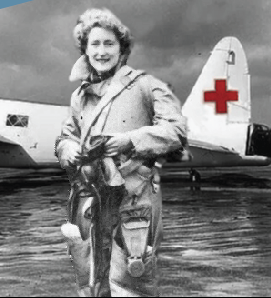
Readers familiar with the best-selling Battle of Britain novel, "Where Eagles Never Flew," will recognize Emily as the girl from the Salvation Army canteen who captures the heart of RAF fighter ace Robin Priestman. The daughter of Communist activists, she studied medieval history at Cambridge before the war, but falls in love with flying after meeting and marrying Robin. In 1942, she learns to fly with the ATA and spend the rest of the war ferrying aircraft, including Britain's first jets, to RAF squadrons.
In the post war period, however, she can't find employment and becomes increasingly introverted and embittered. When Robin is posted to Berlin, she seizes the opportunity to become involved in the establishment of Air Ambulance International (AAI), a private aviation company engaged in flying sick and injured patients to hospitals in the West. By the opening of "Cold War", Emily's role as a partner in AAI and to her husband has become crucial. Almost unnoticed, she has become the mortar holding things together.
The below excerpt features Emily on a "routine" flight for Air Ambulance International"
When they collected the weather report fortheir return trip, they were warned that a thunderstorm was brewing. It wasn’tanything particularly dangerous, just a “heat storm,” the met officer said.Under normal circumstances, they could have flown around it, but because theyhad to stay in the corridor, they were going to have to fly through it. Furthermore,without patients, they were not given precedence over the Airlift freighters andspent fifty minutes in the take-off queue. By then the sky was dark and thefirst, thick drops of rain fell on the cockpit windscreen. Emily reached forward to activate the windscreenwipers.
The skies remained dark the entire flight,although the thunderstorm never materialised. Apparently, it had passed to the northof them. Then suddenly, just twenty minutes short of Berlin, the aircraft was abruptlyand violently shaken by turbulence.
Emily yelped involuntarily, and, embarrassed,confessed to Kiwi. “Sorry! I’ve never encountered air turbulence as abrupt andbad as that before.”
“I hateto tell you this, Emily, but that wasn’t turbulence. It was flak.” He pointedto the distinctive puff of brown-black smoke just ahead but to the right oftheir track.
Emily’s mouth went dry and then the Wellingtonwas shaken a second time. Another puff of smoke erupted on their left as thenurse put her head through the curtain to ask in a panicked tone what washappening.
Emily replied it was just Soviet “war games”and they were not in danger. She persuaded her to go back into the fuselage andstrap herself in.
When they were alone again, Kiwi informed her,“On the assumption that they are aiming to miss us, I am notgoing to take evasive action but will hold altitude, course, and speed. Thatway they’ll know where not to shoot.”
As a third burst of flak rattled the aircraft,however, they could hear the nurse calling on God’s help.
“I’d better go back and see if I can calm herdown,” Emily suggested and started to unstrap herself.
Kiwi held her in place with a firm hand on herarm. “Nothing is going to calm her down and there are no patients back therefor her to upset. It’s better for you to stay where you are.”
She looked at him blankly.
“You need to be ready to take over thecontrols, if I get injured.”
“But if they’re not aiming at us—” Emilystarted.
Kiwi cut her off. “Shrapnel from a near misscan pierce the fuselage. The exterior is just linen and glue, remember? Theaircraft is in no danger. It’s designed for this. But a big piece of shrapnelcould easily take off my foot, hand, or head.”
Or mine, Emily added mentally, and she drew adeep breath to steady herself. The flakwas still going off about three hundred feet ahead of them at 15-secondintervals. It mockingly marked a corridor for them.
Emily became so transfixed by the corridorbetween the black puffs of smoke marking the flak bursts that she only graduallybecame aware of voices in her earphones. Evidently, they were within range ofradio transmissions from Berlin air traffic control. A voice crackled, “…roger, Gatow Control.”
A second voice followed. “Rafair 038, Wilco.There’s a white Wellington with red crosses all over it two thousand feet belowand a mile ahead getting bracketed by it.”
A third voice came in, “They’re picking on thesmaller, lower and slower aircraft.”
“Moby Dick, can you read me?” Emily recognisedAssistant Section Leader Hart’s worried voice. Before Emily had a chance toanswer, Hart urged anxiously, “Come in, Moby Dick!”
Emily had the horrible feeling that Robin wasin the tower. They would have told him incoming aircraft were reporting flakand he would have gone up to hear the radio transmissions for himself. Takingthe mic, she answered in a voice pitched to sound completely relaxed, “GatowControl, this is Moby Dick.” Stretching to look down and confirm theirposition, she added only marginally prematurely, “We’re passing into Berlinairspace now. No damage or injuries.” Silently she added, “This time.” Shehoped fervently that Robin would not ground her. Far from putting her offflying, the flak highlighted the character of the enemy they were facing and reinforcedEmily’s commitment to keep flying patients out of their clutches.
Emily is a character in both of the First two volumes of the Bridge to Tomorrow Trilogy

The first battle of the Cold War is about to begin....
Berlin 1948. In the ruins ofHitler’s capital, former RAF officers, a woman pilot, and the victim of Russianbrutality form an air ambulance company. But the West is on a collision coursewith Stalin’s aggression and Berlin is about to become a flashpoint. World WarThree is only a misstep away. Buy Now
Berlin is under siege. More than twomillion civilians must be supplied by air -- or surrender to Stalin's oppression.
USAF Captain J.B. Baronowsky and RAF FlightLieutenant Kit Moran once risked their lives to drop high explosives on Berlin.They are about to deliver milk, flour and children’s shoes instead. Meanwhile,two women pilots are flying an air ambulance that carries malnourished andabandoned children to freedom in the West. Until General Winter deploys on theside of Russia. Buy now!
Based on historical events, award-winning and best-selling novelistHelena P. Schrader delivers an insightful, exciting and moving tale about howformer enemies became friends in the face of Russian aggression — and how closethe Berlin Airlift came to failing.
Winning a war with milk, coal and candy!
July 2, 2024
Writing the Second Book in a Trilogy - "Cold War"
Writing the second book in a series of novels is inherently different from writing a stand-alone novel or the first book in a series. The challenges are unique.
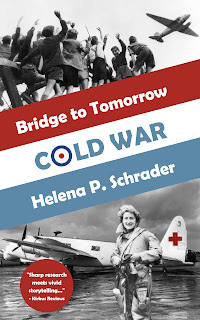
The second book in a trilogy is inherently inhibited by what has been laid out in the first book -- and by what must come in the final book. The characters have largely been introduced, the scene has been set, and the conflicts that drive the book established. Yet the final resolution of conflicts and the completion of character arcs must be left to the final book. So what is going on in the second book?
Actually, quite a lot.
In the Bridge to Tomorrow trilogy, the historical framework provided three distinct phases of confrontation and with them three different thematic vocal points.
The first book, Cold Peace, depicted the rising tensions between the former wartime allies and the step-by-step descent into crisis. Thematically, the issues were the lingering hostilities of the war and the political and psychological difficulties in breaking with wartime stereotypes and recognizing new realities. The second book Cold War, opens after the Soviets have ended the wartime era of cooperation by taking the offensive and laying siege to the Western Sectors of Berlin. The Western response is logistical and technical: an Airlift. The book, therefore, explores the mechanisms, achievements and challenges associated with that response. Yet gradually -- just as happened in real life -- the purely logistical tasks develop additional layers of meaning and -- almost imperceptibly -- understanding and respect begins to develop between the former enemies. By the time the Airlift begins to falter and stands on the brink of collapse, the characters no longer view it as a job but rather as a mission.The third book, Cold Victory, will describe how the Allies together with their former enemies the Berliners triumph over the cynical contempt for humanity exhibited by the Soviet state. Yet like all victories, this one comes at a price. In this case: the division of Europe and a premature amnesty for the foot-soldiers of Hitler's tyranny.
In literary terms, Cold Peace introduces the characters and their inner doubts and dreams, Cold War opens opportunities, and Cold Victory puts them to the test.
Winning a war with milk, coal and candy!
Berlin is under siege. More than twomillion civilians must be supplied by air -- or surrender to Stalin's oppression.
USAF Captain J.B. Baronowsky and RAF FlightLieutenant Kit Moran once risked their lives to drop high explosives on Berlin.They are about to deliver milk, flour and children’s shoes instead. Meanwhile,two women pilots are flying an air ambulance that carries malnourished andabandoned children to freedom in the West. Until General Winter deploys on theside of Russia. Buy now!
Based on historical events, award-winning and best-selling novelistHelena P. Schrader delivers an insightful, exciting and moving tale about howformer enemies became friends in the face of Russian aggression — and how closethe Berlin Airlift came to failing.
June 25, 2024
The Dramatic Story of the Berlin Airlift -- The Subject of my "Bridge to Tomorrow Series."
81 Years ago today the Russians fired the first shots in the Cold War.
They sought to expel the Western Powers from Berlin, but the brutal tactic of cutting off the civilian population from food, power, light, fuel, medicine and other other necessities.
The Bridge to Tomorrow trilogyshows how the West stopped this Russian aggression. This bloodless victory of democracy over tyranny has manylessons for the present day, which I first examined and described in an acclaimed non-fictionbook about the Berlin Airlift, The Blockade Breakers.
The novel trilogy goes beyond the logistical achievements and the political chess game depicted in the non-fiction book to explore the social and psychological impact of thispivotal historical event. I consciously employ a diverse cast of characters --women and men, British, American, German and Ukrainian -- to enable the readerto see the unfolding events through different, even conflicting, perspectives.
In the coming weeks, I will discuss the novel's structure and the characters employed. Today, I wanted to set the stage by providing the historical background.
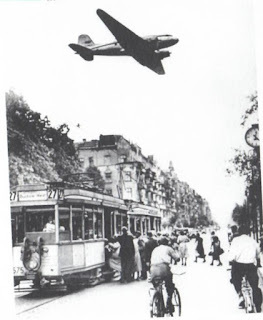
The confrontation started on 24 June 1948, when the Soviet Union abruptly stopped all road, rail and canal traffic to the Western Sectors of Berlin and simultaneously cut off electric power. The impacted districts of the former German capital were located more than one hundred miles inside the Soviet Zone of occupation and were dependent on imports of food, power, medicine and all other necessities of life. The Soviet interdiction of access routes and power supply therefore put the 2.2. million civilian residents of the Western Sectors of Berlin under siege.
The target of the Soviet blockade was not, however, those 2.2 million German residents, but rather the 8,500 French, British and American troops representing the Western Allies. The Western garrisons were there in accordance with wartime agreements about the occupation and control of defeated Germany. The Americans and British had turned over German territory conquered by their troops to Soviet Control in exchange for the right to station garrisons in the former German capital. Months before German surrender in May 1945, Stalin, Churchill and Roosevelt had agreed that each of the victorious powers would control a "sector" of Berlin and station their troops there. (Below showing Berlin's four Sectors of Occupation)
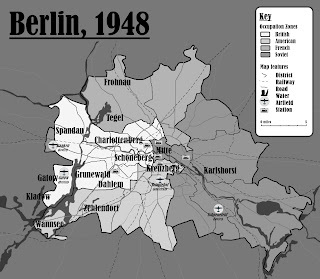
By 1948, however, times were changing. Stalin didn't really care about the promises he had made when the Soviet Union was still fighting Nazi Germany and dependent on Western aid. He believed it was time to continue the "march of History" toward world communism. A Communist Germany was high on his priority list (following the absorption of the Baltic States into the Soviet Union and the on-going installation of Communist regimes in Poland, Hungary, Czechoslovakia, Bulgaria, Romania, Yugoslavia and Greece).
Western presence in Germany was an obstacle to Communist control, and Western troops in Berlin, more than 100 miles inside the Soviet Zone of Occupation, were a particular irritant. Stalin wanted the Western powers out of Berlin sooner rather than later. However, he didn't want to provoke war with the sole nuclear power of the age, the United States of America. (Below images of U.S. bombing of Hiroshima and Nagasaki.)
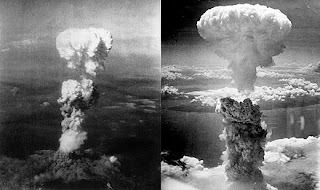
The blockade of the Western Sectors of Berlin appeared to offer a brilliant -- and non-violent! -- means of forcing the Western powers to withdraw their troops. This tactic exploited two facts. First, the lack of written agreements guaranteeing the Western powers use of the roads, rails and canals, all of which crossed the Soviet Zone. Second the heavy dependence of the Western Sectors of Berlin on goods transported overland from the Western Zones. Just as in a medieval siege, by cutting the Western Sectors off from supplies of food, medicine, and raw materials the inhabitants of these Sectors faced slow starvation and increasing disease the longer the siege lasted.
Unlike a medieval siege, however, the Western Sectors of Berlin were made more vulnerable by dependence on electricity and/or gas and oil to power the water and sewage systems, to run public transport, provide lighting, heat homes and offices, and to keep factories running. Although the Western Sectors of Berlin had a few out-dated power plants, the bulk of Berlin's electric power was produced in the Eastern Sector. Furthermore, even the inadequate power plants in the Western Sectors were coal fired, and the blockade had cut them off from sources of coal. In short, Berlin's lights would go out, its public transport and factories close, and the sewage and water systems stop functioning as soon as the coal reserves stored in the city were exhausted. (Image of Post-War Germany - a grim place to live even without a blockade.)
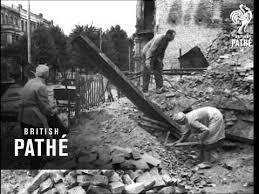
The Soviets (not unreasonably) believed that the residents of the Western Sectors of Berlin would rise up in rebellion against the Western powers. They expected the German population to riot and demand the withdrawal of Western troops as soon as all public utilities broke down -- if not before. From the Soviet point of view, it was a perfect plan in which, without firing a gun, they could turn German public opinion against the West and force the Western powers to retreat from Berlin with their tails between their legs in shame.
To be sure, there was one loophole in the plan. There were written agreements guaranteeing the Western Power access to Berlin via three very specifically delineated "air corridors." These were each 20 miles wide and 10,000 feet high and all Allied air traffic was confined to these corridors and the airspace inside a twenty-mile radius of Berlin's center. (Below a map showing the air corridors.)
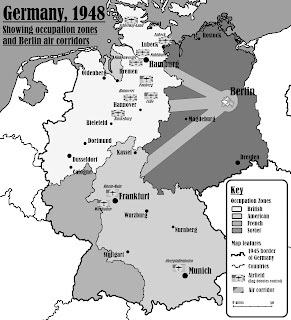 When the Soviet Blockade was imposed on 24 June 1948, it initially looked as if the Western Allies had only two choices: to withdraw their troops to avoid causing unnecessary suffering to the inhabitants of Berlin, or to try to fight their way through with convoys of goods protected by armed troops. Unsurprisingly, the Western political leadership shied away from sending troops into the Soviet Zone -- even as escorts for convoys of food, medicine and coal -- for fear they might provoke a shooting war. Yet it was also less than ten years since Neville Chamberlain had flown to Munich to make territorial concessions to another dictator, Adolf Hitler. The result of his policy of appeasement had been a bitter and costly world war. No one in London or Washington was inclined to follow in Chamberlain's footsteps and appease Stalin. (Below the famous photo of Neville Chamberlain declaring his Munich Agreement with Hitler had brought "Peace in Our Time.")
When the Soviet Blockade was imposed on 24 June 1948, it initially looked as if the Western Allies had only two choices: to withdraw their troops to avoid causing unnecessary suffering to the inhabitants of Berlin, or to try to fight their way through with convoys of goods protected by armed troops. Unsurprisingly, the Western political leadership shied away from sending troops into the Soviet Zone -- even as escorts for convoys of food, medicine and coal -- for fear they might provoke a shooting war. Yet it was also less than ten years since Neville Chamberlain had flown to Munich to make territorial concessions to another dictator, Adolf Hitler. The result of his policy of appeasement had been a bitter and costly world war. No one in London or Washington was inclined to follow in Chamberlain's footsteps and appease Stalin. (Below the famous photo of Neville Chamberlain declaring his Munich Agreement with Hitler had brought "Peace in Our Time.")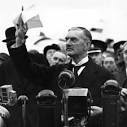
It was at this juncture that a relatively junior RAF officer, Air Commodore Waite, suggested it might be possible to supply the Western Sectors of Berlin by air -- as a stop-gap measure. At the time, the task seemed quite hopeless. Nothing even remotely similar had ever been tried before. Contemporary aircraft had very small cargo capacity (between 3 and 10 tons except for the very largest aircraft, the latter of which were few in number). The Western Sectors of Berlin, on the other hand, consumed roughly 14,000 tons of goods on a daily basis in the period just before the imposition of the Blockade. Furthermore, similar attempts -- like the Luftwaffe effort to supply the Sixth Army at Stalingrad by air -- had all failed. (Below an photo of Air Commodore Waite)
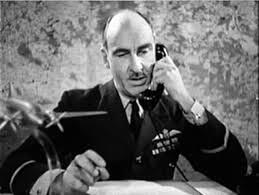
More by default than from conviction, the Western leadership decided to start a airlift. The decision was undertaken not in expectation of victory, but in the hope that it would buy the West time to negotiate a satisfactory settlement with Stalin. The instructions to both air forces boiled down nothing more than: "Do the best you can as fast as you can."
In short, the Berlin Airlift began without the West really knowing how much of what the Berliners needed to survive -- much less how much those things weighed. It was launched despite an almost complete absence of cargo aircraft and aircrew in Germany and despite serious inadequacies in airfield capacity and air traffic control. It started without airlift expertise in theater and without a unified command structure. Furthermore, the Airlift faced severe challenges and often faltered. By the end of 1948, fog and then snow almost chocked off the Airlift. It stood on the brink of failure.
Yet the setbacks were overcome, the Airlift took wing again. By the end of April 1949, the Soviets knew they had been defeated and on May 12, 1949 the Russians ended their blockade of the Western Sectors of Berlin, allowing convoys of trucks and trains to transit the Soviet Zone of Occupation to bring food, fuel and other goods to Berlin. This represented a dramatic Western victory and a humiliation for Stalin. West had made no concessions to the Soviet Union. They had defeated the crude attempt to force the Berliners to surrender their freedom not with guns and bombs but with butter, bread and candy.
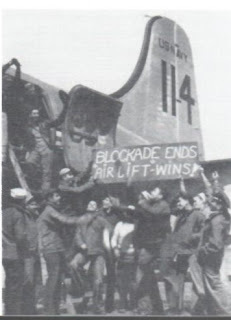
Stalin's attempt to swallow West Berlin into his Zone, to humiliate the Western powers and to disrupt the establishment of a free and democratic German government in the Western Zones had failed. Not only was the Federal Republic of Germany established, so was the North Atlantic Treaty Organization, and the foundations of the European Union. All these institutions were instrumental in defending Western Europe from further Soviet -- and now Russian -- aggression. Meanwhile, the Western Allies remained in Berlin until German reunification, and West Berlin became a beacon of freedom deep inside the Soviet sea of authoritarianism. All that is due to the Berlin Airlift.
The first two volumes of the Bridge to Tomorrow Trilogy are now available.

The first battle of the Cold War is about to begin....
Berlin 1948. In the ruins ofHitler’s capital, former RAF officers, a woman pilot, and the victim of Russianbrutality form an air ambulance company. But the West is on a collision coursewith Stalin’s aggression and Berlin is about to become a flashpoint. World WarThree is only a misstep away. Buy Now
Berlin is under siege. More than twomillion civilians must be supplied by air -- or surrender to Stalin's oppression.
USAF Captain J.B. Baronowsky and RAF FlightLieutenant Kit Moran once risked their lives to drop high explosives on Berlin.They are about to deliver milk, flour and children’s shoes instead. Meanwhile,two women pilots are flying an air ambulance that carries malnourished andabandoned children to freedom in the West. Until General Winter deploys on theside of Russia. Buy now!
Based on historical events, award-winning and best-selling novelistHelena P. Schrader delivers an insightful, exciting and moving tale about howformer enemies became friends in the face of Russian aggression — and how closethe Berlin Airlift came to failing.
Winning a war with milk, coal and candy!
June 18, 2024
"Why I Write Historical Fiction" -- A Guest Blogpost from Tamar Anolic
Tamar has always loved telling stories and started writing for fun as a teenager. Her favorite historical figures are the Romanovs, and she has written four novels about them. Perhaps this is natural, as she is the great-granddaughter of immigrants of mostly Russian origin. Tamar has also published a short story collection set in the Old West, The Lonely Spirit, which she turned into an audiobook last fall. When she isn’t writing, Tamar attends to her day job as a maritime and international trade lawyer.

I write historical fiction to tell untoldstories, and to tell stories of what might have been. I’ve always found fertileground for this in Russian history, and in the Romanovs in particular.
I first becameinterested in the Romanovs after my mom bought me a biography of Rasputin.Russia fascinated me because of its vastness and contradictions. At the heightof the Romanov empire, the country spanned one sixth of the world’s landmassand eleven time zones from Moscow to St. Petersburg all the way toVladivostok and the Pacific Ocean. The diversity in the population, too, wasenormous, both in terms of differences in wealth and class and in terms ofreligions and lifestyles. I drew on all of this in writing my novel in shortstories, Tales of the Romanov Empire.
The Romanovs ruledfor over three hundred years, but only a few of them are well known. Manypeople know Peter the Great, Catherine the Great, Nicholas and Alexandra andtheir son, the hemophiliac Alexei. Fewer people know Tsar Mikhail, the firstRomanov tsar- or that Mikhail was elected to the throne after sixteen years ofcivil war. Few people know that Mikhail and his son, Alexei, both came to thethrone when they were only sixteen. They also both held bride shows to findwives.
I started writinghistorical fiction because I wanted to tell these types of stories. In writingspecific chapters about so many of the Romanovs, I loved imagining the detailsof each event -- how did the shadows in the Kremlin move across Alexei’s face? Howcold was the palace when Mikhail awoke at four a.m. for the first religiousservice of the day?
I also foundMikhail’s ambassadors fascinating. The gifts he received from Iranian shahs andOttoman sultans meant that the world was interconnected in the 1600s in ways wedon’t hear much about today.
In addition, learningthat the Grand Duke Alexei, one of Alexander II’s sons, visited America andhunted out west with Buffalo Bill was incredible to me. The juxtaposition oflands and cultures was as evident in Alexei’s travels as it was between Mikhailand his ambassadors. Each of these stories became their own chapter in Talesof the Romanov Empire.
But the Grand DukeAlexei was not the only connection between the Romanovs and America for me. Mygreat-grandparents emigrated out of Eastern Europe, and all but one came fromRomanov territory. It is no secret that theRomanovs were virulently anti-Semitic, and their laws reflected that. Therewere statutes dictating where Jews could live (in the famous Pale ofSettlement, for example) and laws that forced Jews into the Romanovs’ army fora 25-year period. This was often a life sentence. Given that, and coupled withpogroms directed at Jews, it is no wonder that so many of them sought thesafety and freedom of American shores.
My great-grandfather, Wolf Anolic, was one of the peoplewho fled. I grew up on family stories about his running from conscription intothe Russian army, and of his arriving in New York City alone before he broughtthe rest of the family over. When I set out to write a book about the whole ofthe Romanov empire, I knew I would have to include a few chapters about him. It was magical to locate Wolf’s immigration record at Ellis Island,and to find pictures of the ship he sailed on to get there. Those chaptersproved to be some of the more gratifying ones I wrote.
The Romanovs’ pogromsalso have echoes in the spasms of violence we’re seeing in the world now. Thatis another aspect of why I write historical fiction- so many of today’sproblems have historical roots. We need to learn about the past and tell itsstories in order to find solutions now.
Of course, myfascination with the Romanovs also harkens back to the tragedy of the RussianRevolution, and what the Romanovs could have done to avoid it. At the sametime, I always wondered what kind of tsar Alexei, Nicholas II’s son, would havebeen. That’s why I wrote my other novels about the Romanovs -- the threealternate historical books in the Triumph of a Tsar series, which werepublished several years ago. I wanted to explore what might have been, andwriting those novels was a satisfying way of doing that.
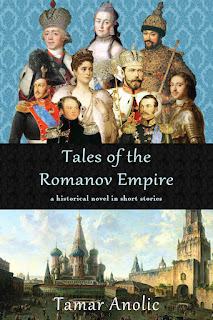
Blog host Helena P. Schrader is an award-winning novelist, the author of six non-fiction and twenty historical fiction books. Her current project in a three-part series about the Berlin Airlift.
The first two volumes of the Bridge to Tomorrow Trilogy are now available.

The first battle of the Cold War is about to begin....
Berlin 1948. In the ruins ofHitler’s capital, former RAF officers, a woman pilot, and the victim of Russianbrutality form an air ambulance company. But the West is on a collision coursewith Stalin’s aggression and Berlin is about to become a flashpoint. World WarThree is only a misstep away. Buy Now
Berlin is under siege. More than twomillion civilians must be supplied by air -- or surrender to Stalin's oppression.
USAF Captain J.B. Baronowsky and RAF FlightLieutenant Kit Moran once risked their lives to drop high explosives on Berlin.They are about to deliver milk, flour and children’s shoes instead. Meanwhile,two women pilots are flying an air ambulance that carries malnourished andabandoned children to freedom in the West. Until General Winter deploys on theside of Russia. Buy now!
Based on historical events, award-winning and best-selling novelistHelena P. Schrader delivers an insightful, exciting and moving tale about howformer enemies became friends in the face of Russian aggression — and how closethe Berlin Airlift came to failing.
Winning a war with milk, coal and candy!
June 11, 2024
Why I Write Historical Fiction - A Guest Blogpost from Diana Rubino
Diana Rubino's passion for history has taken her to every setting of her historical and biographical novels: England, France, Egypt, Italy, and all over the United States. With her husband Chris she's the owner of engineering business CostPro Inc., a golfer, pianist, fitness nut, Jersey Shore Italian, and real estate tycoon on the side. She spends as much time as possible living the dream on her beloved Cape Cod.
I enjoy meetingpeople from the past and how they fit into the major events of their lives.Writing historical fiction sends me back to the past, but keeps me grounded inreality.
My earliestrecollection of fascination with history was when I was 8 years old and myparents brought me to George Washington’s Mount Vernon. This was my first visitto a historic home. As the tour guide led us through the mansion, I felt astrong connection with the past and the people who lived there, as if theirenergy lingered. Deeply curious, I asked a million questions about theWashingtons, the estate’s history, the enslaved who ran the plantation. (an‘out of the mouths of babes’ moment was when we stood in Washington’s bedroomwhere he died in 1799, the guide told us he’d succumbed to a throat infection.I piped up, as the hypochondriac that I was, “Can we still catch it?”)
I visited manyhistoric places after that, but Mount Vernon became one of my favorites, and itbecame a huge part of my life when I wrote ONA JUDGE: I AM FREE, about MarthaWashington’s favorite servant.
When I was olderand realized that we all have a connection to history, as we’re all part of it,I became a true history buff. I hungered to learn about those who lived beforeus, and how they lived. They are so different from us and the way we live in modern times, but they were people, justlike us, with hopes, fears, goals, wishes, frustrations—they ate, slept, loved,grieved, took offense, worked, played, worshiped and experienced every emotionwe all do in our lives.
As I learned howmuch more difficult life was in the past, and how much harder it was to succeedat any endeavor, I developed a strong respect and admiration for our forebears.Reading biographies introduced me to these people on a more intimate level, asindividuals, and my appreciation for their struggles and their hardshipsintensified.
The more books Iread about women of the past, the more I felt connected to them as they becamemy heroines. I learned the stark reality of the difficulty of womens’ lives,not allowed to own property if married, not allowed to vote, their treatment assecond class citizens, subservient to their fathers, then to their husbands. Wewomen today take so much for granted.
I was alreadywriting romance novels, but contemporaries. One day I asked myself, “Why notwrite novels about the people who shaped their times, and made history happen,in those long-ago worlds that captivate me?” I’d always been interested theTudors—Henry VIII’s court, his wives, and his daughter Elizabeth who becameEngland’s greatest queen. I sat down and recreated that world, and the finishedproduct became THE JEWELS OF WARWICK. I then explored an era prior to theTudors—Richard III and his times. A kind and benevolent young king, unfairlymaligned and vilified, I got to know Richard and his world from the Richard IIISociety, and was delighted to find out that every member has a story about howthey ‘met’ Richard—his charismatic aura captures imaginations. I immersedmyself in his world and wrote a few books about him and the people surroundinghim, his friends, his family, his loves, his enemies. From then on, I knew I’dwrite only historicals, because I so enjoyed these journeys to the past, intolong-ago worlds, as I researched and walked in the footsteps of those who pavedthe way for us.
Writing fictionabout these unforgettable people gives me leeway to create what the historicalrecord didn’t leave behind—that, to me, is the joy of fiction. I deeply admirebiographers who must adhere to the historical record with every word, butfiction allows a world of make-believe to blend with verifiable events andfacts. And as a novelist, I make sure to add to my author’s notes at the end ofeach book disclaimers for having needed to fill in what the record left out.But as Mark Twain said, “Never let the truth get in the way of a good story,”as a novelist I delight in creating worlds based on the events these peoplelived, and the buildings, diaries, inventions, and artifacts they left behind.

Find out more about Diana Rubino and her books at: www.DianaRubino.com
Blog host Helena P. Schrader is an award-winning novelist and author of six non-fiction and twenty historical fiction books. Her current project in a three-part series about the Berlin Airlift.
The first two volumes of the Bridge to Tomorrow Trilogy are now available.

The first battle of the Cold War is about to begin....
Berlin 1948. In the ruins ofHitler’s capital, former RAF officers, a woman pilot, and the victim of Russianbrutality form an air ambulance company. But the West is on a collision coursewith Stalin’s aggression and Berlin is about to become a flashpoint. World WarThree is only a misstep away. Buy Now
Berlin is under siege. More than twomillion civilians must be supplied by air -- or surrender to Stalin's oppression.
USAF Captain J.B. Baronowsky and RAF FlightLieutenant Kit Moran once risked their lives to drop high explosives on Berlin.They are about to deliver milk, flour and children’s shoes instead. Meanwhile,two women pilots are flying an air ambulance that carries malnourished andabandoned children to freedom in the West. Until General Winter deploys on theside of Russia. Buy now!
Based on historical events, award-winning and best-selling novelistHelena P. Schrader delivers an insightful, exciting and moving tale about howformer enemies became friends in the face of Russian aggression — and how closethe Berlin Airlift came to failing.
Winning a war with milk, coal and candy!
June 8, 2024
Why I write Historical Fiction -- A Guest Blog by David West
Today my series on why novelists choose to write historical fiction continues with a guest post from David West. David caught the writing bug after being commissioned to write a non-fiction work. He studied creative writing but failed to find his protagonist, until he read a biography of Sir Francis Drake.
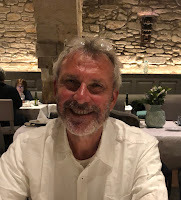
I fell into writing historical fiction entirely by accident. I had been commissioned by Gower Publishing to write a textbook on Project Sponsorship in 2009, and thoroughly enjoyed the writing process, and the thrill of books with my name on the cover. I was already an Open University addict so took their courses on Creative Writing and Advanced Creative Writing. I thought I’d like to write a crime novel. My wife Claire was a criminal barrister, so would be a great bank of stories and fact checker. However, I just couldn’t get a sense of my detective without it being a copycat Morse, Vera, Strike etc. So I set the whole idea aside.
I was reading George Malcolm Thomson’s biography of Sir Francis Drake, when I discovered that Walsingham had a spy feeding him detailed intelligence on the Spanish Armada, including how many ships they had, how they were armed, how many troops they carried, who their captains were, and what orders they had. The spy’s name was Sir Anthony Standen, and my mother’s maiden name was Standen.
I read everything I could about Sir Anthony, from his entry in the Oxford Dictionary of National Biography, reports held on him by Venetian diplomats in the British library, letters in the archive of the Duke of Tuscany, and The Golden Lads by Daphne du Maurier. He led the most incredible life. He is the only man I can think of to have been knighted by both Mary Queen of Scots and Queen Elizabeth I. But throughout my research I kept asking, why did he do that, and how did he do that? So I began to write my own version of his life story, sticking to the known facts, but seeking to explain the why and how. The Spy who Sank the Armada was born. I subsequently discovered on Ancestry that Sir Anthony was the elder brother of my 10th great-grandfather.
Having got to know Anthony rather well, I decided to write a series.
I have used his 001 skillset, and passed his knowledge onto his children, so that I can continue the series indefinitely. I am currently 49,000 words into The Favourite Murder, the fifth book in the Sir Anthony Standen Adventures. It’s set in Paris around 1614. Sir Anthony knew Marie de Medici as a child, when he was working for her father (on Walsingham’s orders), and she later became mother of Louis XIII. Cardinal Richelieu is about to make his appearance in the book. Although I fell into historical fiction by accident, I’m so glad that I did.

Blog host Helena P. Schrader is an award-winning novelist and author of six non-fiction and twenty historical fiction books. Her current project in a three-part series about the Berlin Airlift.
The first two volumes of the Bridge to Tomorrow Trilogy are now available.

The first battle of the Cold War is about to begin....
Berlin 1948. In the ruins ofHitler’s capital, former RAF officers, a woman pilot, and the victim of Russianbrutality form an air ambulance company. But the West is on a collision coursewith Stalin’s aggression and Berlin is about to become a flashpoint. World WarThree is only a misstep away. Buy Now
Berlin is under siege. More than twomillion civilians must be supplied by air -- or surrender to Stalin's oppression.
USAF Captain J.B. Baronowsky and RAF FlightLieutenant Kit Moran once risked their lives to drop high explosives on Berlin.They are about to deliver milk, flour and children’s shoes instead. Meanwhile,two women pilots are flying an air ambulance that carries malnourished andabandoned children to freedom in the West. Until General Winter deploys on theside of Russia. Buy now!
Based on historical events, award-winning and best-selling novelistHelena P. Schrader delivers an insightful, exciting and moving tale about howformer enemies became friends in the face of Russian aggression — and how closethe Berlin Airlift came to failing.
Winning a war with Bread and Chocolate!

